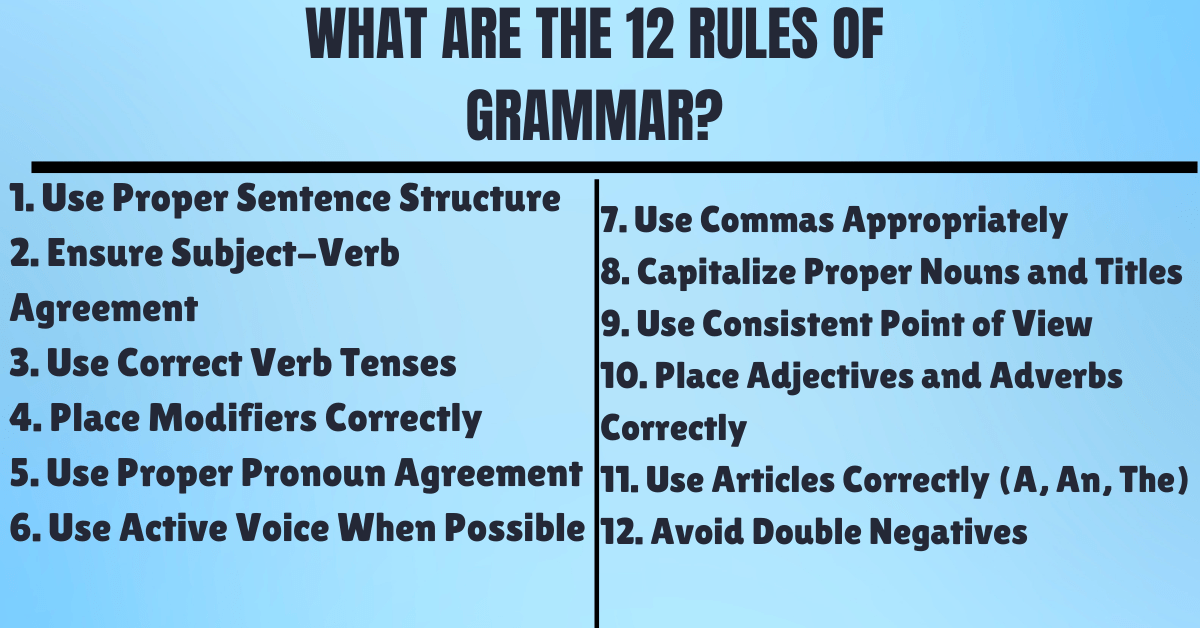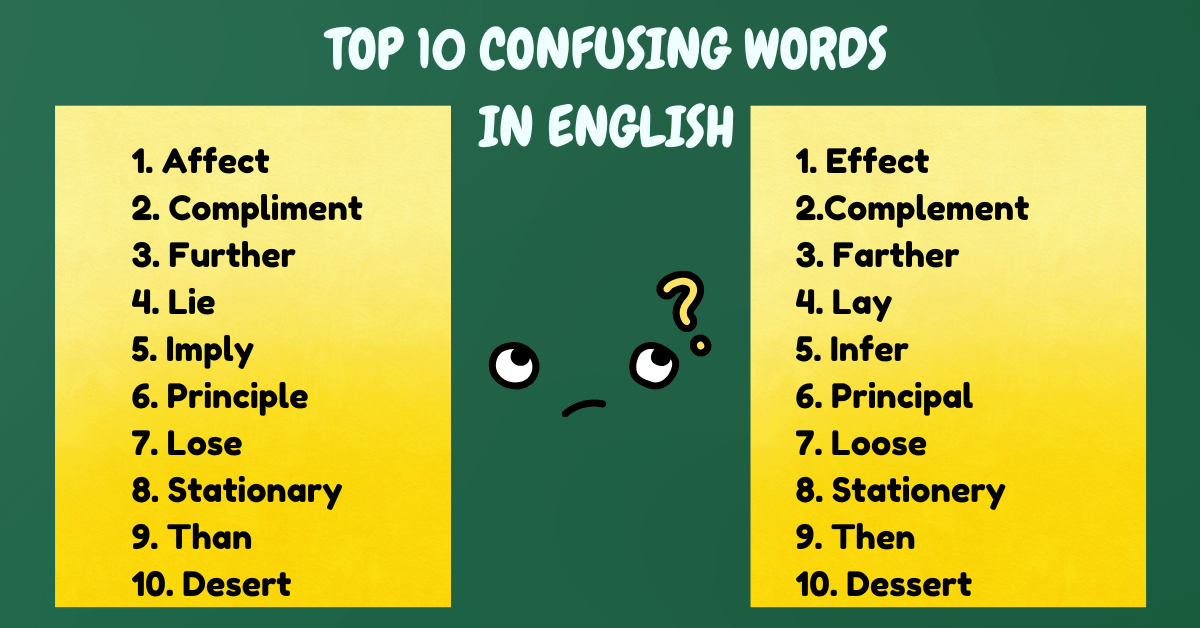Good grammar is essential for making sure our sentences are clear, precise, and understood as we intend. Knowing a few fundamental grammar rules can help anyone, from beginners to advanced learners, improve their writing and speaking skills. Here are the 12 essential grammar rules that everyone should know.
1. Use Proper Sentence Structure
Every sentence should have at least one subject (who or what the sentence is about) and one predicate (what the subject is doing). Together, these form a complete thought. This grammar rule ensures your sentences are clear and convey a complete idea.
Example: The dog barked loudly.
Here, “The dog” is the subject, and “barked loudly” is the predicate.
2. Ensure Subject-Verb Agreement
In a sentence, the subject and verb must agree in number. This means a singular subject takes a singular verb, and a plural subject takes a plural verb. This grammar rule is key to maintaining clarity in your sentences.
Example: She walks to school. (Singular subject and verb)
Example: They walk to school. (Plural subject and verb)
3. Use Correct Verb Tenses
Verb tenses indicate when an action occurs (past, present, or future). It’s essential to use the correct tense and be consistent throughout your sentence or paragraph. This grammar rule ensures your reader or listener knows when the action is happening.
Example: He studied yesterday. (Past tense)
Example: She studies every day. (Present tense)
4. Place Modifiers Correctly
Modifiers add detail to a sentence, but they should be placed close to the word they’re modifying to avoid confusion. Misplaced modifiers can change the meaning of a sentence, so following this grammar rule is essential for accuracy.
Correct: The boy with a red hat is my friend.
Incorrect: The boy is my friend with a red hat.
5. Use Proper Pronoun Agreement
Pronouns must agree with the nouns they replace in both number (singular/plural) and gender. Following this grammar rule helps keep sentences clear and understandable.
Example: Sarah lost her book. (“Her” refers to Sarah)
Example: The students raised their hands. (“Their” refers to students)
6. Use Active Voice When Possible
In the active voice, the subject performs the action, making sentences clearer and more direct. This grammar rule can make your writing and speaking more engaging.
Active Voice: The chef prepared the meal.
Passive Voice: The meal was prepared by the chef.
7. Use Commas Appropriately
Commas help clarify meaning by separating different elements in a sentence. Use them to separate items in a list, introductory phrases, and clauses. This grammar rule is crucial for proper punctuation.
Example: After dinner, we went for a walk.
Example: She bought apples, oranges, and bananas.
8. Capitalize Proper Nouns and Titles
Always capitalize proper nouns (specific names of people, places, and things) and titles when they’re used as part of someone’s name. This grammar rule ensures correct formatting in formal writing.
Example: I visited New York City.
Example: Doctor Smith is here.
9. Use Consistent Point of View
Maintain a consistent point of view throughout a sentence or paragraph. Shifting from “I” to “you” or “he/she” within a sentence can be confusing. This grammar rule keeps the sentence focused.
Correct: I went to the market and bought some vegetables.
Incorrect: I went to the market, and you bought some vegetables.
10. Place Adjectives and Adverbs Correctly
Adjectives describe nouns, while adverbs modify verbs, adjectives, or other adverbs. Make sure they’re placed correctly to clarify what they’re modifying. This grammar rule enhances clarity.
Example: She quickly finished her homework. (Quickly modifies the verb finished)
Example: The blue car is mine. (Blue describes the car)
11. Use Articles Correctly (A, An, The)
“A” and “an” are indefinite articles and are used with non-specific nouns, while “the” is a definite article used for specific nouns. Following this grammar rule helps clarify which nouns are general and which are specific.
Example: I saw a cat. (Any cat)
Example: I saw the cat that lives in our neighborhood. (A specific cat)
12. Avoid Double Negatives
Double negatives can make sentences confusing. In English, using two negatives in the same sentence cancels each other out, making the sentence positive. This grammar rule is essential for clarity.
Incorrect: I don’t have no money.
Correct: I don’t have any money.
In Summary
These 12 grammar rules provide a strong foundation for clear, effective communication in English. Mastering them can make a significant difference in how well you express yourself, whether you’re speaking or writing. But remember, grammar alone isn’t enough. To truly build fluency, you need consistent, real-world practice. That’s where the EngVarta app comes in. It connects you with live English experts over phone calls, giving you a safe space to apply these rules in actual conversations, get instant corrections, and boost your confidence. Download the EngVarta app today and turn grammar knowledge into real communication skills. Happy learning!



